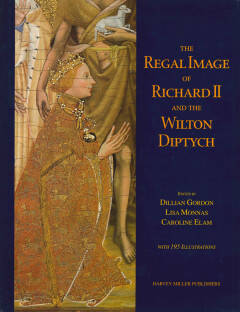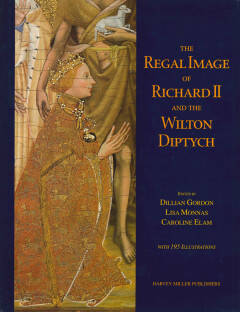
En raison d'une grêve chez bpost, votre commande pourrait être retardée. Vous avez besoin d’un livre rapidement ? Nos magasins vous accueillent à bras ouverts !
- Retrait gratuit dans votre magasin Club
- 7.000.000 titres dans notre catalogue
- Payer en toute sécurité
- Toujours un magasin près de chez vous
En raison de la grêve chez bpost, votre commande pourrait être retardée. Vous avez besoin d’un livre rapidement ? Nos magasins vous accueillent à bras ouverts !
- Retrait gratuit dans votre magasin Club
- 7.000.0000 titres dans notre catalogue
- Payer en toute sécurité
- Toujours un magasin près de chez vous
80,95 €
+ 161 points
Description
The Wilton Diptych, in the National Gallery in London, has always been the focus of attention, not only because of its intrinsic beauty as a work of art but also because its evident personal link with Richard II - a king who was ever conscious of the regal image and his God-given monarchical status. Following the important exhibition at the National Gallery in 1992, after the cleaning of the panels, a symposium was held on all aspects of the painting itself, and on the history and arts of Richard II's time. The present volume offers the paper given on that occasion, as well as some additional contributions. The essays included in this book cover many fields. Richard II's ideas of kingship are considered by Niguel Saul; his major architectural achievement, the rebuilding of Westminster Hall, is presented by Christopher Wilson, while its sculptural embellishments, the statues of English kings, are examined, together with Richard's tomb, by Phillip Lindley. Kay Staniland asks whether the King's clothing was extravagant and Marian Campbell describes the jewellery and metalwork known to have been in his possession. Shelagh Mitchell brings out Richard II's profound devotion to the cult of saints. Celia Fisher looks at the meaning of the flowers depicted in the field of Paradise in which the Virgin and Angels are set, and the individual plants on which the White Hart is couched, and Lucy Sandler compares devotional images in contemporary manuscripts. Ashok Roy comments on the technique of the Diptych. Lisa Monnas brings examples of textiles which closely match those in which the figures in the Diptych are apparelled. Nigel Morgan assesses the 'signi fication' of the banner, and Maurice Keen considers the painting as a possible crusading icon. Jonathan Alexander analyses the famous portrait of Richard II in Westminster Abey and Pamela Tud This volume offers a collection of selected essays discussing the Wilton Diptych, a work of art with intrinsic beauty and with an evident personal link with Richard II - a king who was ever conscious of the regal image and his God-given monarchical status.
Spécifications
Parties prenantes
- Auteur(s) :
- Editeur:
Contenu
- Nombre de pages :
- 379
- Langue:
- Anglais
Caractéristiques
- EAN:
- 9781872501727
- Date de parution :
- 01-01-97
- Format:
- Livre relié
- Format numérique:
- Genaaid
- Dimensions :
- 216 mm x 277 mm
- Poids :
- 1859 g

Les avis
Nous publions uniquement les avis qui respectent les conditions requises. Consultez nos conditions pour les avis.






